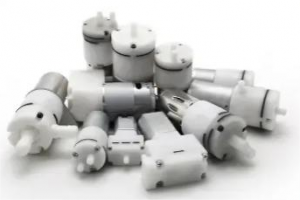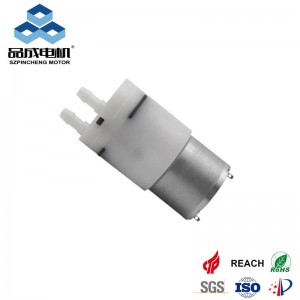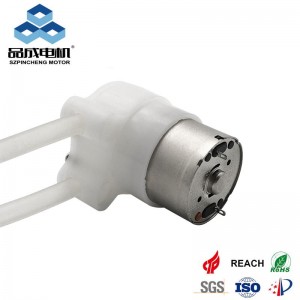The short, crucial answer is: No, you should never intentionally run a mini diaphragm pump dry. While it might survive brief accidental dry spells, prolonged operation without liquid is one of the fastest ways to destroy these otherwise durable little pumps. Understanding why dry running is so harmful is key to maximizing your pump's lifespan and avoiding costly failures.
Why Dry Running is a Death Sentence for Diaphragm Pumps:
Mini diaphragm pumps rely on the pumped liquid for several critical functions beyond just moving fluid. When deprived of this liquid, catastrophic failure modes kick in rapidly:
-
Overheating & Motor Burnout:
-
The Primary Killer: The pumped liquid acts as a vital coolant for the pump's motor and internal mechanism.
-
Without Liquid: Friction from the rapidly oscillating diaphragm mechanism and the motor itself generates intense heat with nowhere to dissipate.
-
Result: Motor windings overheat, insulation melts, and the motor burns out – often permanently. You might smell burning plastic or see smoke. Even if it doesn't burn out immediately, excessive heat drastically shortens motor life.
-
-
Diaphragm Destruction:
-
Material Vulnerability: Diaphragms are typically made from flexible but heat-sensitive materials like rubber (NBR, EPDM), thermoplastic elastomers (TPE), or fluoropolymers (PTFE).
-
Dry Friction & Heat: Without liquid lubrication and cooling, the diaphragm rubs excessively against internal surfaces and the pump housing. This creates:
-
Friction Heat: Further contributing to overall overheating.
-
Abrasive Wear: Accelerated wear even without debris present.
-
Hardening & Cracking: The material rapidly loses flexibility, becomes brittle, and cracks or tears.
-
Melting: In severe cases, thermoplastic diaphragms can actually melt and deform.
-
-
-
Increased Wear on Seals, Valves, and Mechanism:
-
Lack of Lubrication: The liquid lubricates seals, bearings (if present), the connecting rod, and the check valve seats/flaps.
-
Dry Operation: Causes accelerated wear on all these moving parts, leading to leaks, reduced efficiency, valve failure, and eventual seizure or jamming. Particles from this accelerated wear can also contaminate the pump.
-
-
Loss of Prime & Pumping Inefficiency:
-
Diaphragm pumps rely on the liquid to create a seal within the pumping chambers for efficient operation. Running dry breaks this prime. Even if the pump survives physically, it may struggle to re-prime and pump effectively afterward due to air pockets and potential damage.
-
"But My Pump Ran Dry for a Minute and Seems Fine..."
-
You Got Lucky (Temporarily): Very brief, accidental dry running (seconds) might not cause immediate catastrophic failure, especially on higher-quality pumps. However, it causes cumulative damage.
-
The Damage is Often Internal and Progressive: A weakened diaphragm might fail hours or days later. Overheated motor windings lose insulation integrity, leading to premature failure down the line. Increased wear shortens the overall lifespan significantly.
-
Never a Good Practice: Treating dry running as acceptable, even for short periods, is playing pump roulette. The risk of sudden failure is high.
Accidental Dry Running: Causes & Prevention
Dry running often happens unintentionally. Be vigilant about these scenarios:
-
Source Depletion: The water reservoir or container runs empty.
-
Prevention: Use float switches, level sensors, or timers to cut power when the source is low. Choose reservoirs larger than your expected run time.
-
-
Inlet Blockage: Debris, kinks, or clamps completely block the inlet tube.
-
Prevention: Use inlet filters/strainers suitable for your liquid. Ensure tubing is kink-free and secured properly. Regularly check for blockages.
-
-
Air Leaks in Inlet Line: Loose fittings or cracks allow air to be sucked in instead of liquid, effectively running the pump dry.
-
Prevention: Ensure all inlet connections are tight and air-tight. Inspect tubing for damage.
-
-
Incorrect Installation: The inlet is not submerged, or the pump isn't primed correctly before starting.
-
Prevention: Always ensure the inlet is fully submerged below the liquid level before starting. Prime the pump according to the manual (often by briefly submerging the inlet while running or filling the inlet line).
-
Are There Any "Dry-Run Capable" Diaphragm Pumps?
-
Truly Dry-Run Safe? Rarely. Truly 100% dry-run safe mini diaphragm pumps are uncommon and expensive. They require specialized designs:
-
Advanced Materials: Ceramics, PEEK, or reinforced PTFE for diaphragms and valves.
-
Enhanced Cooling: Larger housings, heat sinks, or even forced air cooling (not practical submerged).
-
Robust Bearings & Lubrication: Permanent lubrication or dry-running bearings.
-
Thermal Protection: Essential, but a last resort, not a design feature for continuous dry running.
-
-
"Dry-Run Tolerant" (The Realistic Term): Some higher-end industrial miniature diaphragm pumps are marketed as "dry-run tolerant." This usually means:
-
They incorporate robust materials (like PTFE diaphragms) better able to withstand some dry-running heat and friction.
-
They have effective thermal cut-off switches that quickly shut the pump off before catastrophic overheating occurs.
-
They are NOT designed for continuous dry operation. The tolerance is for accidental situations, giving you a chance to rectify the issue before damage occurs. Repeated triggering of thermal protection still stresses the pump.
-
Protecting Your Mini Diaphragm Pump: Essential Practices
-
Never Intentionally Run Dry: This is rule #1.
-
Always Prime Before Start: Ensure the pump chambers and inlet line are filled with liquid.
-
Secure the Inlet: Keep it fully submerged and protected from sucking air.
-
Use Inlet Filters: Prevent debris blockages.
-
Monitor Liquid Sources: Implement level sensors or alarms for critical applications.
-
Check for Leaks: Regularly inspect inlet tubing and fittings.
-
Consider "Dry-Run Tolerant" Models for Critical Apps: If accidental dry running is a significant risk in your application, invest in a pump specifically designed with better tolerance (understanding its limits).
-
Listen & Observe: Unusual noises (grinding, screeching), excessive heat, reduced flow, or a hot motor housing are immediate red flags. Shut the pump off immediately and investigate.
Conclusion: Treat Liquid as Essential Lifeblood
For a mini diaphragm pump, the liquid it moves isn't just its job; it's its coolant, lubricant, and protector. Running dry is fundamentally abusive to the pump's design. While brief accidental exposure might not spell instant doom, it inflicts damage that shortens lifespan and risks sudden failure. By understanding the severe consequences of dry running – motor burnout, shredded diaphragms, and accelerated wear – and implementing simple preventative measures, you ensure your mini diaphragm pump delivers reliable performance for its intended lifespan. Always prioritize keeping liquid flowing through it.
you like also all
Read More News
Post time: Aug-16-2025





